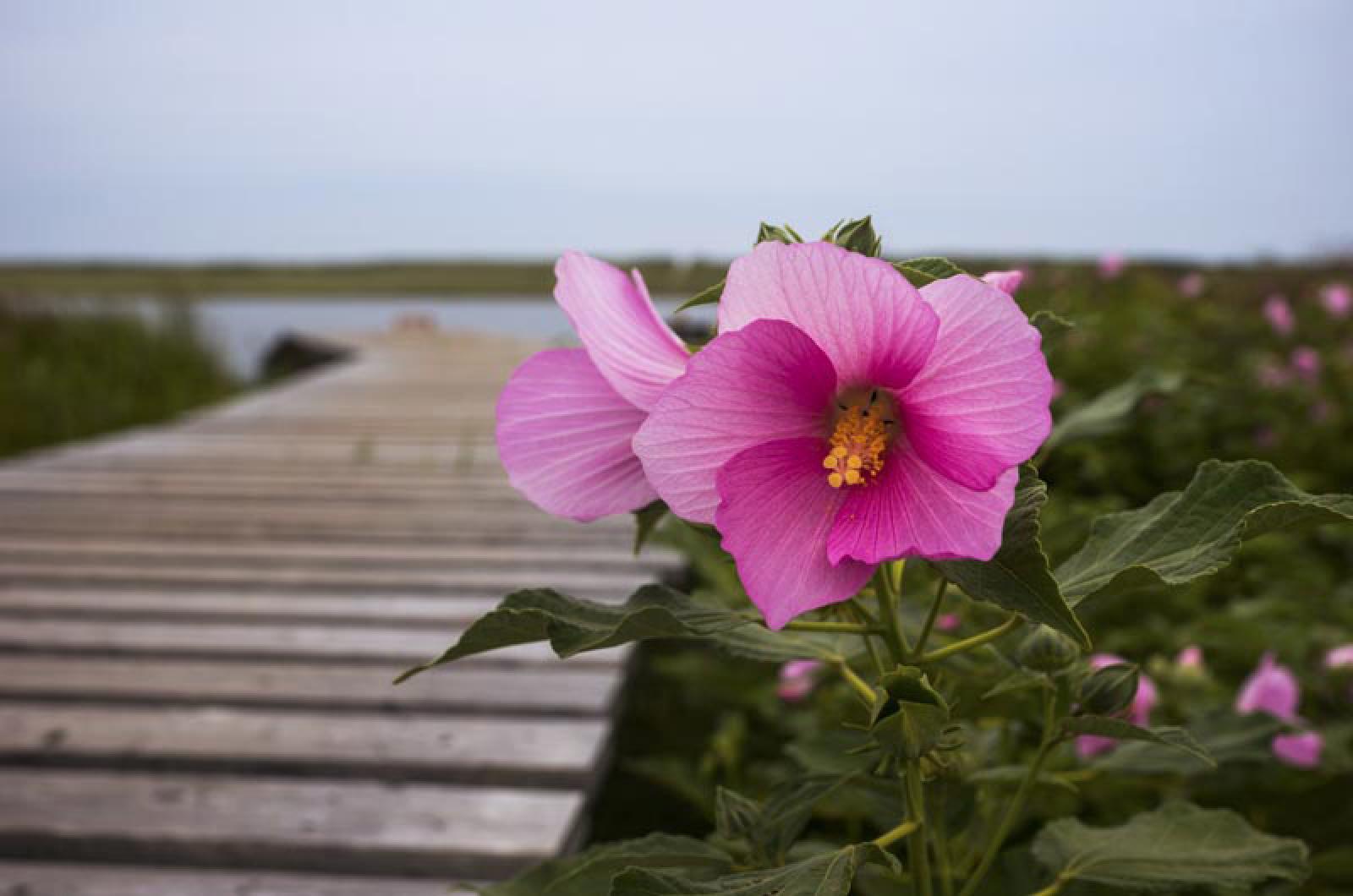Philadelphia horticulturist Bernard McMahon, who also happened to be Thomas Jefferson’s garden consultant and mentor, knew a good plant when he saw it. He recommended rose mallow for American gardens.
Appreciative of native species, McMahon made note of the propensity among New World gardeners to import plants. “In Europe, plants are not rejected because they are indigenous,” he wrote, “. . . and yet here, we cultivate many foreign trifles, and neglect the profusion of beauties so bountifully bestowed on us by the hand of nature.”
He was so right in giving accolades to the locals and for suggesting rose mallow for Jefferson’s garden.
Rose mallow, also known as swamp mallow, marsh mallow (not the toasting kind), crimson-eyed rose marrow, marshmallow hibiscus, wild cotton, and hardy hibiscus, is a bold and beautiful waterside plant. Its large and showy pink or white flowers are blooming on the shores of some of our ponds, rivers and marshes right now. Parsonage Pond in West Tisbury has a sizable population that is a head-turner on the way up-Island.
This particular species, hibiscus moscheutos or hibiscus palustris, is only one variety in the large mallow family. Mallows include notable varieties such as okra, cotton and cacao; however, one must go deeper into the scientific family malvacaea to the genus hibiscus to find our local and other closely-related plants.
Mallows are known for their edibility and even rate a Bible mention, in Job 30: 3-4: “For want and famine they were solitary; fleeing into the wilderness in former times desolate and waste. Who cut up mallows by the bushes, and juniper roots for their meat.”
A European variety, althaea officinalis, is the inspiration from which marshmallows (yes, the toasting kind) were originally made. Thus, there are some varieties that serve as food, though our local wild hibiscus would not be a candidate for consumption.
Historical mentions suggest eating marsh mallow was verboten. Greek philosopher and mathematician Pythagoras recommended refusing to consume this plant, explaining that ingestion would be disrespectful of the gods because the plant was considered a “messenger sent to earth by gods to show sympathy with the short lives of mortals.”
Even today, most modern publications barely mention rose mallow as edible, explaining that, while eating the plant is possible, the hairy leaves and the plant’s mucinous nature do not deliver deliciousness to those that have tried to do so.
Rose mallow does, however, have medicinal value, according to traditional sources, including soothing of the skin, treatment of dysentery, lung ailments and infections of the urinary tract.
Wildlife, of course, do not follow human rules or read books on botany. Hummingbirds appreciate the nectar from the large flowers of swamp mallows and many moths and caterpillars consume this plant for their nectar and larval needs.
Pythagoras had a point about respecting nature as a gift of the gods. And McMahon, too, was right about prioritizing native plants such as rose mallow for domestic gardens. In his classic work The American Gardener’s Calendar, he suggests gardeners should search the local woodlands and fields for “the various beautiful ornaments with which nature has so profusely decorated them.”
Any walk in the wild areas of the Vineyard will lead the explorer to precisely the same conclusion.
Suzan Bellincampi is islands director for Felix Neck Wildlife Sanctuary in Edgartown and the Nantucket Wildlife Sanctuaries. She is also the author of Martha’s Vineyard: A Field Guide to Island Nature and The Nature of Martha’s Vineyard.




Comments
Comment policy »